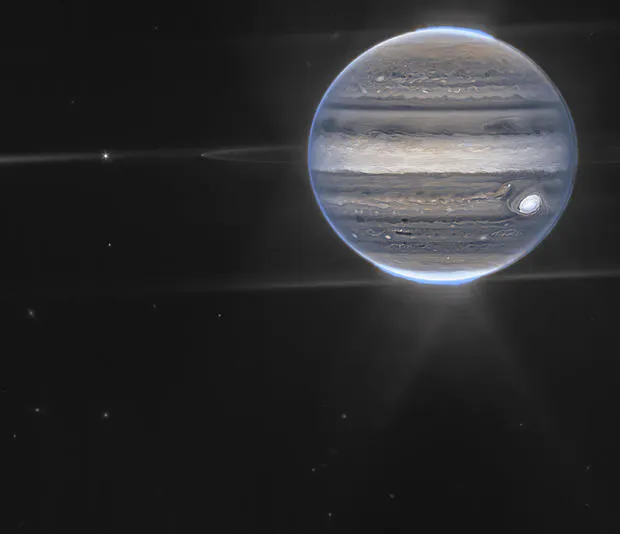NASA Reveals New Webb Telescope Images Of The Solar System's Largest Planet
The world's newest and biggest space telescope is showing Jupiter as never before, auroras and all.Wednesday, August 24th 2022, 10:04 am
The world's newest and biggest space telescope is showing Jupiter as never before, auroras and all.
Scientists released the shots Monday of the solar system's biggest planet.
The James Webb Space Telescope took the photos in July, capturing unprecedented views of Jupiter's northern and southern lights, and swirling polar haze. Jupiter's Great Red Spot, a storm big enough to swallow Earth, stands out brightly alongside countless smaller storms.
One wide-field picture is particularly dramatic, showing the faint rings around the planet, as well as two tiny moons against a glittering background of galaxies. The smaller of the two moons measures just 12 miles across, according to NASA.
 Image Provided By: CBS News
Image Provided By: CBS News
"We've never seen Jupiter like this. It's all quite incredible," planetary astronomer Imke de Pater, of the University of California, Berkeley, said in a statement. He helped lead the observation. "We hadn't really expected it to be this good, to be honest."
"It's really remarkable that we can see details on Jupiter together with its rings, tiny satellites, and even galaxies in one image," de Pater said.
The observatory used a special camera with infrared filters to capture those details, NASA explained in an announcement released alongside the new images. Infrared light is imperceptible to human eyes, so data collected by the observatory's infrared camera was then "translated" — with help from citizen scientist Judy Schmidt — into images, with unique color tones representing wavelengths of differing lengths.
The infrared images were artificially colored in blue, white, green, yellow and orange, according to the U.S.-French research team, to make the features stand out.
NASA and the European Space Agency's $10 billion successor to the Hubble Space Telescope rocketed away at the end of last year and has been observing the cosmos in the infrared since summer. Scientists hope to behold the dawn of the universe with Webb, peering all the way back to when the first stars and galaxies were forming 13.7 billion years ago.
The observatory is positioned 1 million miles from Earth.
Earlier this month, NASA released a stunning image of the Cartwheel Galaxy captured by the Webb telescope. The distant galaxy is located about 500 million light-years away in the Sculptor constellation.
First published on August 22, 2022 / 1:02 PM
© 2022 CBS Interactive Inc. All Rights Reserved. This material may not be published, broadcast, rewritten, or redistributed. The Associated Press contributed to this report.
More Like This
June 6th, 2025
May 16th, 2025











